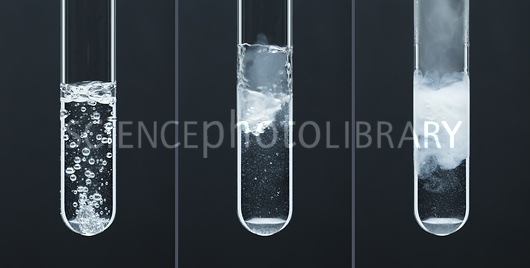Question #5a42c
1 Answer
Explanation:
Calcium metal will react with sulfuric acid to produce calcium sulfate, a sparingly soluble salt that will actually precipitate out of solution, and hydrogen gas.
The balanced chemical equation that describes this single replacement reaction looks like this
#"Ca"_ ((s)) + "H"_ 2"SO"_ (4(aq)) -> "CaSO"_ (4(s)) darr + "H"_ (2(g)) uarr#
The reaction will proceed at a fairly fast rate at first, meaning that hydrogen gas will start to bubble out of solution and calcium sulfate will start to precipitate, but then the calcium sulfate will form a protective layer on the metal that will slow down and eventually stop the reaction.

As you can see in the image, hydrogen gas will begin to bubble out of solution, but as the calcium sulfate, which you can see here as the white precipitate, begins to form the protective layer the bubbles disappear.
Now, you can't really write an expression for the equilibrium constant because this reaction will eventually stop due to the formation of the calcium sulfate.
In other words, you don't have an equilibrium between the forward reaction and the reverse reaction because the forward reaction will stop at some point.
That said, you can assume that an equilibrium is going on here
#"Ca"_ ((s)) + "H"_ 2"SO"_ (4(aq)) rightleftharpoons "CaSO"_ (4(s)) darr + "H"_ (2(g)) uarr#
and say that the equilibrium constant is equal to
#K_c = (["H"_2])/(["H"_2"SO"_4])#
Keep in mind that solids and pure liquids are never added to the expression of the equilibrium constant!

